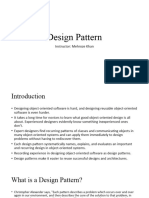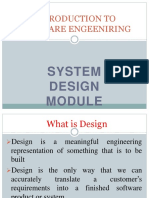0% found this document useful (0 votes)
34 views5 pagesLow Level Design
The document introduces the SOLID principles, which are five rules that enhance software design by promoting maintainability, flexibility, and robustness. It also explains design patterns as structured solutions to common software design problems, categorizing them into creational, structural, and behavioral types. Additionally, it lists various machine coding interview problems across different system types to practice design skills.
Uploaded by
pramodkuppa1995Copyright
© © All Rights Reserved
We take content rights seriously. If you suspect this is your content, claim it here.
Available Formats
Download as DOCX, PDF, TXT or read online on Scribd
0% found this document useful (0 votes)
34 views5 pagesLow Level Design
The document introduces the SOLID principles, which are five rules that enhance software design by promoting maintainability, flexibility, and robustness. It also explains design patterns as structured solutions to common software design problems, categorizing them into creational, structural, and behavioral types. Additionally, it lists various machine coding interview problems across different system types to practice design skills.
Uploaded by
pramodkuppa1995Copyright
© © All Rights Reserved
We take content rights seriously. If you suspect this is your content, claim it here.
Available Formats
Download as DOCX, PDF, TXT or read online on Scribd
/ 5


















































































